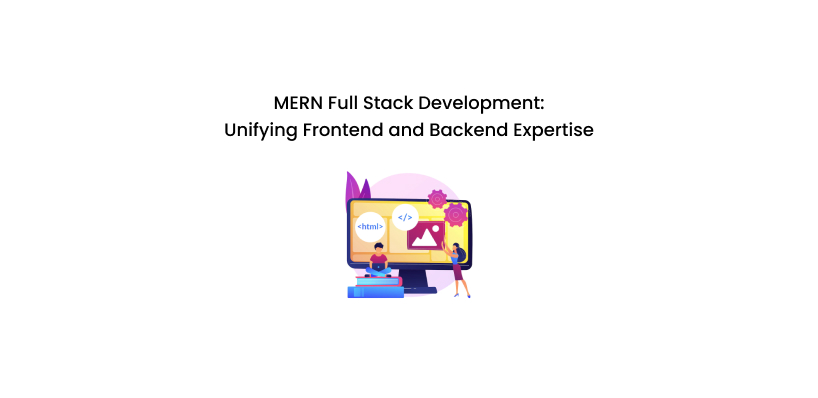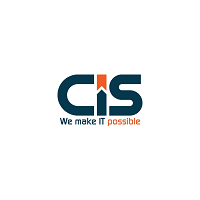
MMS • RSS
Posted on mongodb google news. Visit mongodb google news
MongoDB’s NoSQL database creates both frontend and backend functionality of MERN stack applications; here’s an overview of its basic process: Installing and Setting Up
– Advertising –
MERN full-stack development employs MongoDB, Express.js, React, and Node.js to create full-stack applications.
- Install Node.js (Node Package Manager) and Node.js.
- Create a directory for your project, and navigate there using the command line.
- Install the required packages on both frontend (React, Express) and backend using npm.
Backend Development
- Create an Express.js Server to handle API Requests.
- Define routes to various API endpoints.
- Integrate MongoDB using Node.js libraries like Mongoose; implement CRUD operations for database interaction.
- Use JWT (JSON Web Tokens) for user authentication and authorization.
Frontend Development (React)
- Create React components to define the UI elements in your application.
- Use React Router for client-side navigation and routing.
- Manage component state using React’s state management built-in or a library for state management like Redux.
- Implement forms and user input processing.
- Use Axios or the built-in fetching API to make API requests.
Connecting Frontend to Backend
- Use API requests to send or fetch data from the front end.
- Handle responses on the backend and update the user interface accordingly.
- Ensure that CORS (Cross-Origin Resource Sharing) is configured properly to allow communication between the front and back end.
Deployment: Split up deployment into frontend and backend portions using platforms like Heroku or Netlify as frontend platforms and services like AWS, Azure, or DigitalOcean as backend providers to create your database and backend, respectively.
Test and Debugging: Writing unit and integration tests are crucial to maintaining high-quality code that works perfectly without bugs. Debugging techniques and tools may also be used to locate any issues with the codebase and fix bugs that arise in it.
Best Practices:
- Use coding standards for frontend and backend development.
- Manage your codebase using version control, e.g., Git.
- Follow the Single Responsibility Principle to keep your code modular.
This is only an overview; however, when creating a MERN app, you must keep numerous details and complexities in mind. Many online tutorials, classes, and documentation provide further insights into its inner workings.
The MERN stack is a set of technologies that enables faster application development for developers worldwide. Developed specifically to facilitate JavaScript app creation, four technologies make up this stack; knowing JSON will give you access to database, frontend, and backend operations with relative ease.
In today’s rapidly evolving world, web applications must be dynamic, efficient, and scalable. MERN is an emerging technology that has changed how developers build JavaScript apps.
– Advertising –
These powerful technologies for developing modern web apps comprise MongoDB Express.js, React.js, and Node.js toolsets. This article will explore the MERN stack and its components; its benefits for developers will also be highlighted.
MongoDB Is A Flexible And Scalable NoSQL Database
- MongoDB is an easy and scalable NoSQL database designed for developers.
- It is known for being flexible and scalable when managing large volumes of data. At the same time, its document-based structure makes it user-friendly when integrated with JavaScript.
- MongoDB’s dynamic schema allows MERN developers to seamlessly modify data structures without impacting existing records, providing agility during MERN development.
A Minimalistic Web Application Framework
- Express.js is built on Node.js and simplifies HTTP requests, middleware integration, and routing for web developers looking to quickly build efficient and robust applications.
- The minimalist approach helps developers quickly develop efficient applications.
- Express.js is a powerful middleware that makes adding extra functionality and libraries to your application easy. At the same time, React.js allows developers to build interactive user interfaces quickly.
Build Interactive User Interfaces with React.js
- Utilizing a JavaScript-based library created by Facebook, React allows for the rapid creation and reuse of interfaces.
- Component-based architecture facilitates code reuse and maintenance.
- React.js uses virtual DOM rendering technology to display information quickly without unnecessary updates, leading to increased performance.
Node.Js Serves As The Backend Development Engine
- Node.js allows developers to run JavaScript server-side, streamlining frontend and rear end development in one programming language.
- With its lightweight yet scalable model of nonblocking event-driven I/O, Node.js can handle multiple requests simultaneously without hindering performance or slowing down development timeframes.
- Node.js offers developers a rich ecosystem of packages and modules, giving them plenty of ways to extend functionality.
The MERN Stack Has Several Advantages For Developers
- Utilizing JavaScript: Frontend developer technologies can capitalize on their knowledge while increasing productivity.
- Code Reuse: The MERN stack allows code reuse between front and back to reduce redundancies and ensure consistency, thus saving time and effort when developing. This feature can save both time and effort when developing.
- Optimizing Performance: Both React.js and Node.js have earned praise for their impressive performance gains. React.js’ virtual DOM facilitates efficient rendering and updating, while Node.js’ nonblocking model of I/O adds an extra boost to application performance.
- Flexibility and Scalability: MongoDB’s flexible and scalable features, such as sharding or replica sets, enable MERN stack applications to scale with increasing loads without incurring performance penalties; this enables businesses to scale seamlessly as their needs expand.
- MERN Boasts An Active Community And Ecosystem: MERN features an engaging, supportive community that offers extensive documentation, tutorials, and libraries. Stack Developers can quickly find solutions to problems while keeping abreast of trends within their ecosystem.
Full MERN Form Stack
MERN Stack is a collection of four technologies to build dynamic websites and web apps. This acronym represents four technologies listed below.
- M: MongoDB
- E: ExpressJS
- R: ReactJS
- N: NodeJS
Now that you’ve downloaded and configured all four technologies listed above, the next step should be creating a project folder and initiating a junior MERN stack developer. Open up the folder using CMD or terminal and use this command to initialize package.json:
MERN Stack Components
- A MERN stack consists of four parts. Let’s go over each of them in turn.
- MongoDB, a NoSQL database system, serves as MEN’s core component.
- ExpressJS serves as MERN’s backend web app framework; ReactJS is its third component, allowing you to create user interfaces based upon components quickly.
- NodeJS completes the MERN stack by providing a Java Script Runtime Environment that enables JavaScript code to run outside the browser.
MongoDB
MongoDB is a NoSQL database management system (DBMS) that stores documents with key-value pairs similar to JSON documents. MongoDB allows users to create databases and schemas easily; its Mongo shell provides a JS interface for querying and updating records; users may also delete them directly.
ExpressJS
ExpressJS is a NodeJS framework that streamlines backend code writing by eliminating multiple node modules from being created and offering middleware to ensure code precision.
ReactJS
ReactJS is a JS Library that allows you to quickly build user interfaces for mobile apps and SPAs, using JavaScript code and building user interface components. ReactJS relies on virtual DOM technology for its development platform.
NodeJS
NodeJS, an open-source JavaScript environment, allows users to execute code on servers. Node Package Manager (npm), which enables accessing various node packages or modules, is also included with Node.
Developed using Chrome’s JavaScript Engine, Node allows faster execution of code than its competitors.
Why Work With MERN Stacks?
MERN Stacks provide many advantages. It lets you easily build a 3-tier architecture using JavaScript and JSON for frontend, backend, and database components.
MongoDB is a NoSQL database that stores JSON natively. The entire stack, from CLI to query language and everything in between, is constructed from JSON and JS code.
NodeJS works well with NoSQL database systems like MongoDB to store, manipulate, and manipulate JSON data within your applications at every level.
MongoDB Atlas provides an automated MongoDB Cluster on any cloud provider with just a few mouse clicks. Express is a server-side framework that manages HTTP responses and requests while mapping URLs to functions on the server.
Express pairs perfectly with ReactJS, an interactive frontend JS framework for building interactive HTML UIs while communicating with servers. Data flows seamlessly between technologies, enabling rapid development and easier debugging.
Only one language – JavaScript and JSON structures – are required to understand this system.
Use Cases of MERN
MERN is similar to other popular web stacks in that you can build anything using its technology. However, it remains ideal for developing cloud-based apps requiring dynamic interfaces and JSON.
MERN may be employed for any number of reasons, including:
Calendars and To-Do Apps
A great way to learn the MERN stack is through simple projects, like designing a calendar or to-do list. ReactJS can design the front end for either of these apps.
At the same time, MongoDB provides access to and modification of data within it.
Forums Interactive
A forum, such as a social network or website where users can communicate and exchange messages, would make MERN an excellent solution. Topics for an interactive forum can be predefined or left up to users to decide.
Social Media Product
The MERN stack can be utilized for social media in various ways, from ads and posts to embedding a mini web app directly onto a social media page.
Conclusion
Web developers often choose the  with experience with React and JS to create intuitive applications. MERN has revolutionized web development by combining MongoDB with Express.js and React.js into one powerful stack.
with experience with React and JS to create intuitive applications. MERN has revolutionized web development by combining MongoDB with Express.js and React.js into one powerful stack.
The MERN stack allows developers to easily build dynamic web applications with its code reuse, performance optimizations and scalability; JavaScript can even be utilized across its layers for productivity and efficiency gains. Whether you are an experienced web developer or just starting – MERN opens doors of infinite possibility.
News From
 Cyber Infrastructure INC
Cyber Infrastructure INCCategory: Software Developers Profile: CIS Established in 2003, Cyber Infrastructure INC. or CIS is a leading IT and custom software development company in Central India. Since 2003, CIS has been providing highly optimized technology solutions and services for SMEs and large-scale enterprises across the world. CIS has worked with 5000+ clients in more than 100 countries. Their expertise and experience ranges across a wide range of industry domains like education, finance, travel and hospitality, retail and e-commerce, manufacturing, …
For more information:
Article originally posted on mongodb google news. Visit mongodb google news